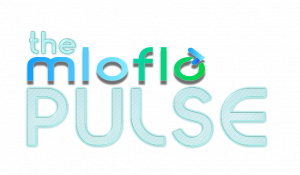
Increasing Efficiency with Mortage CRMs
Mortgage CRMs can be highly beneficial to loan officers. They allow you to keep track of all your leads and contacts in one place, making it easy to stay organized. Mortgage customer relationship management (CRM) is software that helps you manage interactions with current and potential customers. It’s designed to help simplify and streamline your business processes.
This blog post will discuss nine ways a lending officer can use a mortgage CRM to increase efficiency.
Keep reading to learn more!
9 Ways a Lending Officer Can Use a Mortgage CRM
1. Record all customer interactions and notes in the CRM for future reference
A mortgage CRM will allow you to keep track of all your interactions with leads and customers. This includes phone calls, emails, meetings, and more. You can also add notes to each contact record to always have the most up-to-date information. This is extremely helpful when remembering details about a particular lead or customer.
2. Use the CRM to generate reports on mortgage activity and performance
Mortgage CRMs come with powerful reporting features. This allows you to see how many leads you have, how many are active, and what stage of the mortgage process they are in. You can also track your conversion rates and pipeline volume. This information is valuable when trying to identify areas of improvement.
3. Set up automated tasks and reminders
With a mortgage CRM, you can automate repetitive tasks. For example, you can set up email drip campaigns to stay in touch with your leads. You can also set up reminders for follow-up calls and appointments. This helps you stay organized and on top of your to-do list.
4. Analyze customer data to identify trends and potential problems
Your mortgage CRM stores a wealth of data about your customers and their interactions with your business. This data can be precious when trying to identify trends and potential problems. For example, if you notice that a particular lead source isn’t converting well, you can take steps to fix the problem.
5. Use the CRM to track leads and follow up with potential customers
One of the essential features of a mortgage CRM is the ability to track leads. This lets you see which leads are interested in your products and services. It also allows you to follow up with potential customers on time.
6. Send mass emails and track results
You can send mass emails to your leads and customers with a mortgage CRM. This is a great way to stay in touch with your audience. You can also track the results of your emails, so you can see what works and what doesn’t.
7. Generate marketing materials using customer data from the CRM
Another great way to use a mortgage CRM is to generate marketing materials. You can use the data from your CRM to create targeted email campaigns, social media ads, and more. This helps you get the most out of your marketing efforts.
8. Collaborate with other lending officers using a mortgage CRM
Mortgage CRMs make it easy for loan officers to collaborate with processors and realtors. This is extremely helpful when trying to close a deal or resolve a customer issue. You can easily share contact records, notes, and files with a CRM. This ensures that everyone is on the same page and up-to-date on the latest information.
9. Store customer data for future reference
Finally, a mortgage CRM allows you to store customer data for future reference. This is helpful when trying to keep track of your past customers. You can also use this data to create targeted marketing campaigns in the future.
Conclusion
As you can see, a mortgage CRM can be highly beneficial to loan officers. If
you’re looking for a way to increase efficiency and streamline your business
processes, a mortgage CRM is a way to go.





















